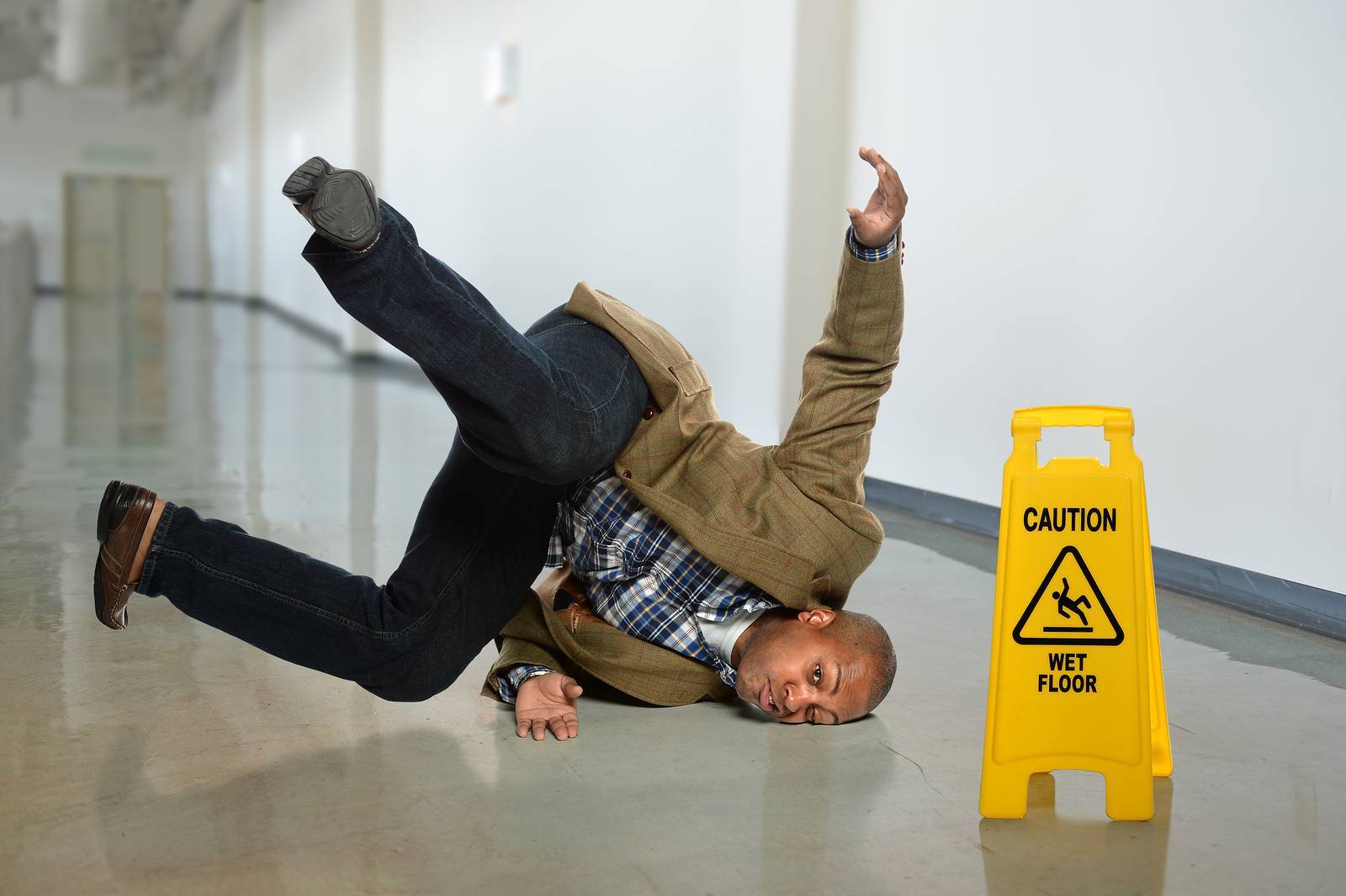A store that opens its doors to the public has a duty to keep the property reasonably safe. An unsafe condition that contributes to an accident can lead to an injury claim against the business.
If you slip and fall in a store, you may have a personal injury claim against that business. Whether it's a "big box" nationwide chain like Walmart or Target, a grocery chain like Kroger, Albertsons or Safeway, or a local independent retailer, any business that invites the public onto its premises is obligated to take certain steps to keep customers out of harm's way. Customers who are injured in slip and fall accidents on store premises may have a valid case against the business, but the process may not always be a smooth one. This article looks at slip and fall claims against common types of retailers, and key issues to consider.
[LINK TO SLIP AND FALL ACCIDENT PAGE]CASES INVOLVING IN-STORE INJURIES
To better illustrate the variety of issues that come up, here are some notable cases involving customers who were injured while visiting retail stores.INSERT ACCORDION CODE!!!COSTCO EMPLOYEE NEGLIGENCEA California jury sided with a plaintiff who slipped on a puddle of liquid soap and shattered her kneecap in a Costco store. According to the injured woman, multiple Costco employees already had passed by and ignored the spill. Costco was ordered to pay more than $400,000 for the woman’s medical treatment and her "pain and suffering."COSTCO & THE "POT STICKER" CASEA woman sued a Costco store in California after slipping on food and injuring her tailbone. Costco employees had been passing out free food samples nearby. The injured woman alleged that Costco should have been conducting inspections of the floors more frequently since customers were walking around the store sampling food. The jury disagreed and sided with Costco. It found that hourly inspections of the floor were adequate.INJURED IN FLORIDA, SUE IN NEW YORKIn a Florida Costco store, a woman from New York slipped on a spilled ice drink, seriously injuring her back. She brought suit against Costco in New York. Costco attempted to move the case to Florida, where the injury occurred. The New York judge denied Costco’s motion and allowed the case to be tried in New York instead of Florida. The ruling was notable because it saved the plaintiff the expense and ordeal of traveling while injured. The court required the defendant Costco store to bear the burden of trying the case in another state.HOME DEPOT "DELETED EVIDENCE" CASEIn the Pennsylvania case Baynes v. Home Depot, a woman sued after slipping on an unknown substance in the home improvement store. When the woman demanded that Home Depot produce the video surveillance of the store from that day, Home Depot stated that the relevant part of that day’s surveillance had been deleted. Despite the lack of video evidence, the court found the plaintiff and ordered Home Depot to pay $44,383.61 for her injury.HARTNER V. HOME DEPOTIn Hartner v. Home Depot, a woman injured her knee when her shopping cart was tipped over after hitting a manhole cover obscured by water. Home Depot argued that the plaintiff was to blame for her injuries because the danger was open and obvious. The Pennsylvania jury disagreed and found that Home Depot was 95% at fault. After the jury determined the number of damages to be $1M, the court ordered Home Depot to pay $950,000 for the woman’s injuries.LOWES EMPLOYEE FORKLIFT ACCIDENTA customer at a Lowe's Home and Garden Center in West Melbourne, Florida was injured badly when, while standing in the checkout line, a store employee driving a forklift ran into the customer from behind. The man suffered a variety of orthopedic injuries and ultimately received a $600,000 payment.WALGREENS WINSA plaintiff who slipped on liquid at a Walgreens in Broadview, Illinois, was not able to demonstrate the source of the liquid. The store claimed the liquid was the result of the man walking in the snow. The man claimed the liquid was already on the store floor. The man lost his case and a subsequent appeal.LANIER V. WAL-MART STORES INC.This Kentucky case precipitated an important shift in these kinds of cases. The court indicated that if a plaintiff could prove he or she fell and was injured due to the presence of a foreign substance on the floor, then a rebuttable presumption arises that Wal-Mart did not keep its store in a reasonably safe condition. It then becomes the store's responsibility to show that it did exercise care in the maintenance of the premises.
The Lanier court recognized that the way that retail giants like Wal-Mart operate, with their method of self-service shopping, lends itself to accidents as customer falls. The court also explained that a photograph of the aisle where the plaintiff had fallen supported the idea that Wal-Mart arranges its displays in a way that draws customers' attention toward them instead of toward the floor, where hazards may be.
HOLDING THE STORE LIABLE
A store can be legally responsible for unsafe conditions under a few different theories. The store owner may be liable if it created an unsafe condition, by using an exceptionally slippery wax to clean its floors, for example.
The owner may also be liable if it knew of the condition, even if it did not create it, but failed to take steps to remedy it. For instance, if one customer spills a drink in an aisle, and another customer injures her back after slipping on the puddle and falling on the floor, the store may be liable for the injury. In that circumstance, the injured person will have to show some evidence that the store knew or should have reasonably known of the condition. There must be some evidence that the spill sat there long enough for the store to have become aware of its presence and have a reasonable opportunity to clean it up and prevent an accident. The injured party may also demonstrate that the store knew (or should have known) that spilled products were common, but failed to have a system in place for monitoring and cleaning up such spills.
In addition, the injured customer will likely have to show that the condition was not so open and obvious that the customer should have taken steps to avoid the unsafe condition. For instance, a customer can generally not recover for injuries sustained from tripping over a large display when the display was clearly visible in the customer's pathway, and the use of such displays is commonplace in similar stores. In other words, a customer is required to exercise reasonable caution to protect him or herself, and can't hold the store accountable for every last thing that goes wrong. The key question to ask is whether a reasonably careful customer would have noticed the unsafe condition and avoided it. If so, then the store might not be held liable for the injury.
If you have been a victim of slip and fall, give us a call at 561-810-8448 to get your claim started.
DUTY TO MAINTAIN SAFE PREMISES
Like all businesses that open themselves up to the public, stores are legally obligated to maintain reasonably safe premises for the protection of their customers. When a slip and fall accident happens at a department store, grocery store, or even a local "mom and pop", the business may be liable for injuries if it can be shown that the slip and fall occurred due to unsafe conditions on the property. (Learn more about proving your slip and fall case.)
Injuries from slip and falls at a store can happen for a variety of reasons. A customer might fall on an accumulation of snow or ice in the entryway of the store, or trip over a frayed floor mat. Items on display might be haphazardly placed and can fall in the path of a customer. The store might have poor lighting leading to poor visibility, or a spilled latte could have left a puddle in an aisle. The possibilities are endless, but regardless of the cause of the slip and fall accident, the legal responsibility of the store will depend on whether it had reasonable notice of the unsafe condition and a chance to fix it.


